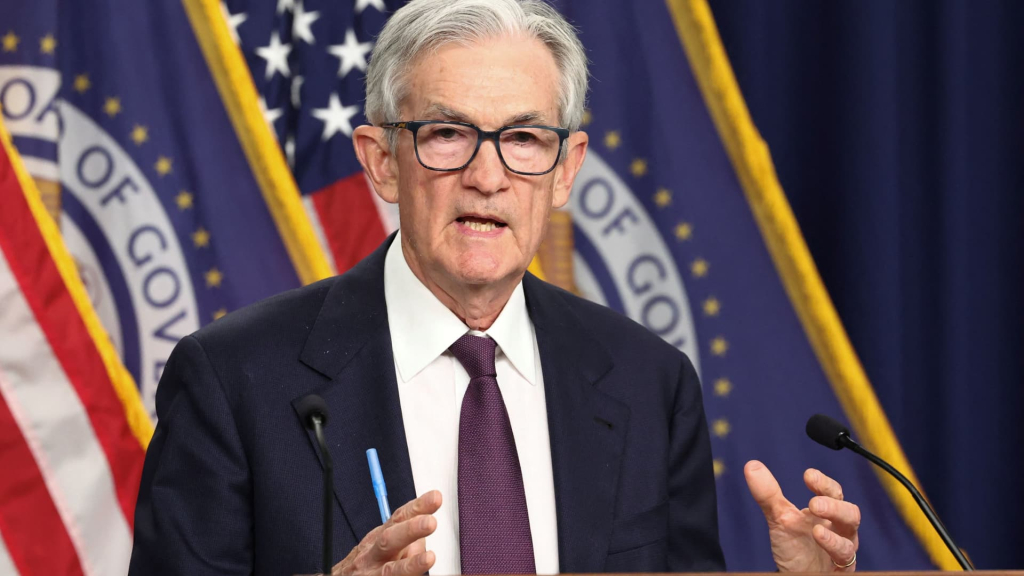President Donald Trump’s recent moniker for Federal Reserve Chair Jerome Powell—“Too Late”—may have historical precedence, especially as central bank leaders have often been criticized for their hesitancy to adjust interest rates promptly.
Past Fed chairs like Arthur Burns, who maintained low rates amidst the stagflation of the 1970s, Alan Greenspan, who failed to act swiftly during the dot-com bubble, and Ben Bernanke, who underestimated the looming subprime mortgage crisis, have all faced scrutiny for their sluggish responses to changing economic signals.
Economists express concern that Powell might inherit a similar reputation as he navigates complex challenges that threaten the Fed’s primary objectives of achieving full employment and maintaining low inflation.
Indeed, many experts argue that the most prudent course of action for Powell may be to refrain from any immediate changes.
“Historically, the Federal Reserve has been slow to react both to upward and downward pressures,” noted Dan North, senior economist at Allianz Trade North America. “Their tendency to wait for more definitive evidence often leads to missed opportunities for timely action, particularly as economic conditions deteriorate.”
Powell, navigating a volatile policy environment exacerbated by Trump’s tariffs—which potentially threaten both economic growth and inflation—faces a dilemma that warrants caution.
According to North, the current circumstances necessitate a careful approach from Powell: “His choice to maintain the status quo is justified given the uncertain landscape, as any response could lead to error.”
Trump’s Rate Cut Demands
Despite asserting confidence in the economy’s resilience regardless of Fed actions, Trump has been vocal in his calls for rate cuts, claiming that inflation has been effectively controlled.
In a post shared on Truth Social following the Fed’s recent decision to keep rates steady, Trump labeled Powell as “Too Late Jerome Powell” and criticized him for lacking the necessary insight, claiming there is “virtually NO INFLATION,” at least according to March’s inflation data, which remained unchanged.
However, the impact of Trump’s tariffs has yet to manifest fully in the economy, as they are still relatively new.
Current economic indicators do not suggest significant price increases or a distinct slowdown; nevertheless, growing apprehensions are reflected in surveys from the manufacturing and service sectors. Consumer sentiment is declining, with nearly 90% of S&P 500 companies citing trade policy concerns during their earnings calls.
At the post-meeting press conference, Powell reiterated his confidence in a “solid” economy and stated that the labor market aligns with the goals of maximum employment.
Dismissal of Pre-emptive Cuts
Powell also ruled out the possibility of making a pre-emptive rate cut, despite indications from sentiment surveys that suggest caution might be warranted.
“His reluctance to rush into decisions stems from two considerations,” said Krishna Guha, Evercore ISI’s head of global policy and central bank strategy. “First, he asserts there’s no real cost to waiting, a stance that might lead to regret later; the second reason—uncertainty over the right course—has more merit.”
Powell has his own record of delayed reactions, evidenced when the Fed hesitated to raise rates in response to rising inflation in 2021, which they initially deemed “transitory.” This misjudgment necessitated a sequence of aggressive rate hikes that have yet to effectively curb inflation back to the Fed’s 2% target.
“Should the Fed wait for labor market indicators to dictate rate cuts, they will invariably be too late,” pointed out Joseph LaVorgna, chief economist at SMBC Nikko Securities and a former senior economic advisor to Trump. “The Fed appears to be insufficiently forward-looking.”
In reality, relying on labor market data as an economic indicator often results in missed signals. Historical patterns indicate that job losses typically begin only after economic downturns have already commenced.
LaVorgna believes that the Fed’s historical patterns could hinder its ability to make timely decisions regarding tariffs and their broader economic implications. “We won’t know it’s too late until it is indeed too late,” he concluded. “The confluence of economic history and market conditions suggests a genuine risk that the Fed may fall behind the curve once again.”


























